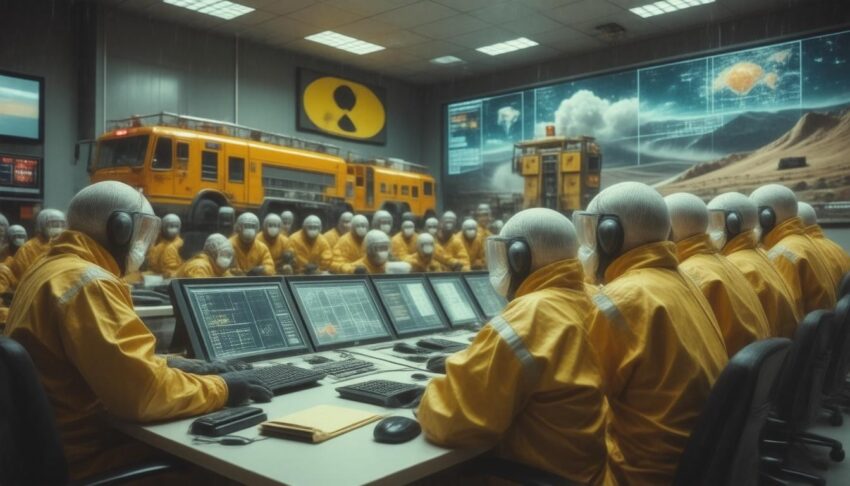The upcoming ConvEx-3 exercise, organized by the International Atomic Energy Agency (IAEA), promises to be a pivotal moment for nuclear safety preparedness on a global scale.
Scheduled to take place on May 14-15, 2025, in Romania, this exercise is set against the backdrop of a simulated severe crisis at the Cernavoda Nuclear Power Plant, one of the most significant nuclear facilities in the region.
The IAEA is extending an invitation to its Member States to join this crucial event, which stands as the highest level of nuclear emergency preparedness drill.
In this article, we will delve into the details and significance of the ConvEx-3 exercise, highlighting the importance of participating and its implications for enhancing nuclear safety and security worldwide.
Key Takeaways
- Participation in the IAEA’s ConvEx-3 exercise is crucial for demonstrating a commitment to global nuclear safety.
- The exercise simulates a severe crisis at the Cernavoda Nuclear Power Plant, enhancing international readiness for nuclear emergencies.
- New elements such as regional collaboration and advanced crisis communication will be emphasized to improve emergency response strategies.
Overview of the ConvEx-3 Exercise
## Overview of the ConvEx-3 Exercise
The International Atomic Energy Agency (IAEA) is gearing up for a significant event in nuclear emergency preparedness, inviting Member States to take part in the upcoming ConvEx-3 exercise scheduled for May 14-15, 2025, in Romania.
This exercise represents the IAEA’s highest level of nuclear emergency drill, simulating a severe crisis scenario at the Cernavoda Nuclear Power Plant.
As nuclear incidents pose worldwide risks, ConvEx-3 serves as a vital platform to enhance international readiness and coordination in response to nuclear and radiological emergencies.
Lydie Evrard, the IAEA’s Deputy Director General, underscores the importance of this exercise, noting that active participation is key to showcasing a commitment to global nuclear safety.
This commitment is crucial not only for ensuring national preparedness but also for fostering a collaborative response among nations during potential nuclear disasters.
The ConvEx-3 exercise is integral to the IAEA’s framework designed to reinforce nuclear safety and security, fulfilling mandates under various international conventions that require nations to test their emergency arrangements every three to five years.
Having previously hosted a ConvEx-3 exercise in 2005, Romania is reaffirming its capabilities to handle complex nuclear scenarios, demonstrating advancements in nuclear safety protocols and regional cooperation.
The 2025 edition introduces new elements focusing on regional collaboration, ensuring consistent protective measures across nations, and integrating a robust approach to nuclear security in the face of possible threats.
Moreover, an advanced crisis communication exercise, leveraging social media platforms, highlights the importance of timely and effective information dissemination during emergencies.
Following the exercise, the IAEA plans to hold a meeting to review findings and share lessons learned.
This meeting will be crucial for recommending improvements to national and international emergency response strategies, solidifying the commitments made during the exercise.
Member States interested in participating are encouraged to register by January 31, 2025, marking an essential step in bolstering global nuclear safety and preparedness.
Importance of Participation for Member States
The significance of participation in exercises like ConvEx-3 cannot be overstated, as they serve as a critical benchmark for assessing the preparedness and resilience of Member States in the face of potential nuclear emergencies.
By participating, countries not only demonstrate their commitment to upholding international nuclear safety standards but also enhance their own national emergency response capabilities.
Collaborative drills allow for the exchange of best practices and strategies, ultimately building a network of support among nations that can be mobilized during real-life situations.
Moreover, such exercises help identify gaps in existing protocols, fostering an environment of continuous improvement and learning.
Engaging in these scenarios also builds public confidence in nuclear safety measures, reassuring citizens that their governments are equipped to handle crises effectively.
As Member States prepare to engage in the upcoming ConvEx-3 exercise, the collective aim remains clear: to enhance global readiness and safeguard lives in the event of nuclear incidents.
Support Us: Check out our recommended products on Amazon.


